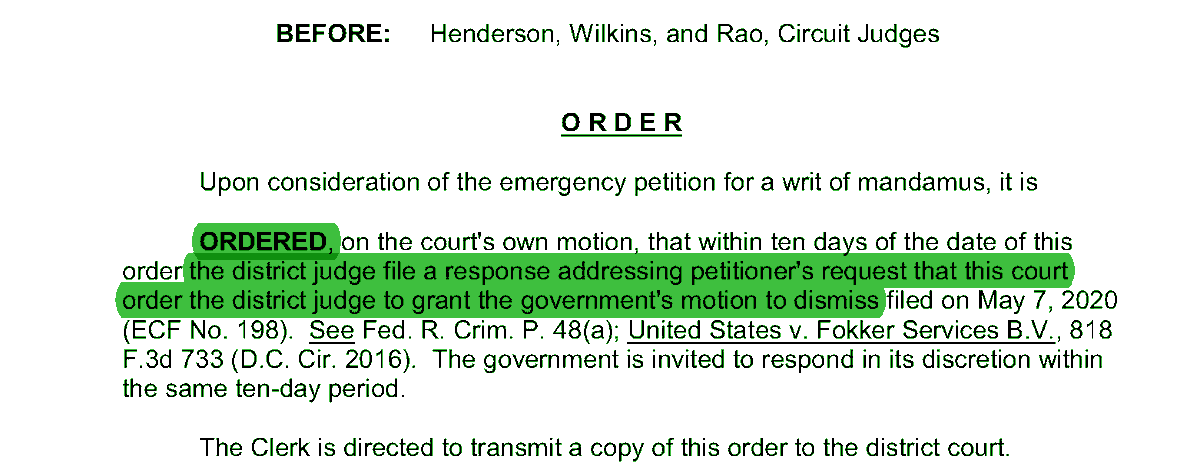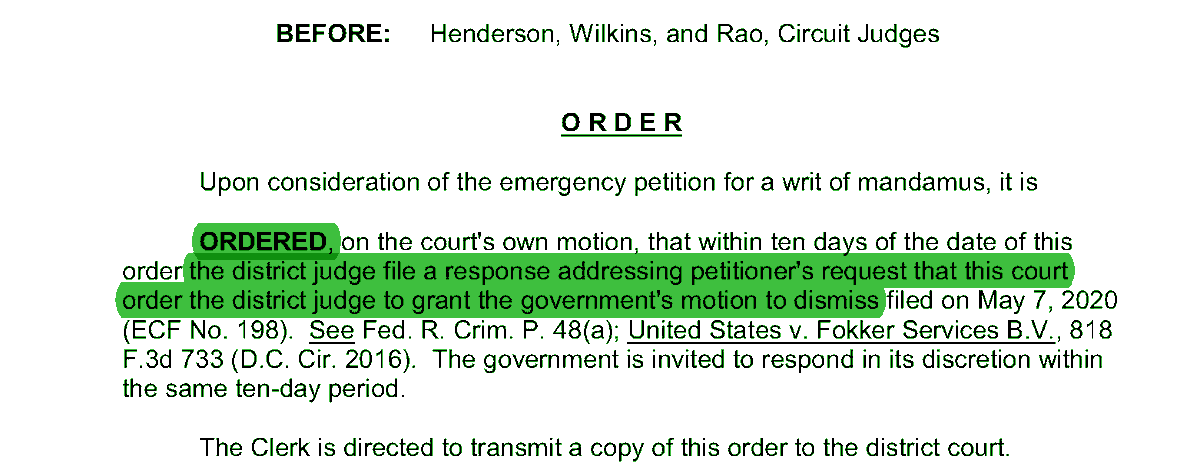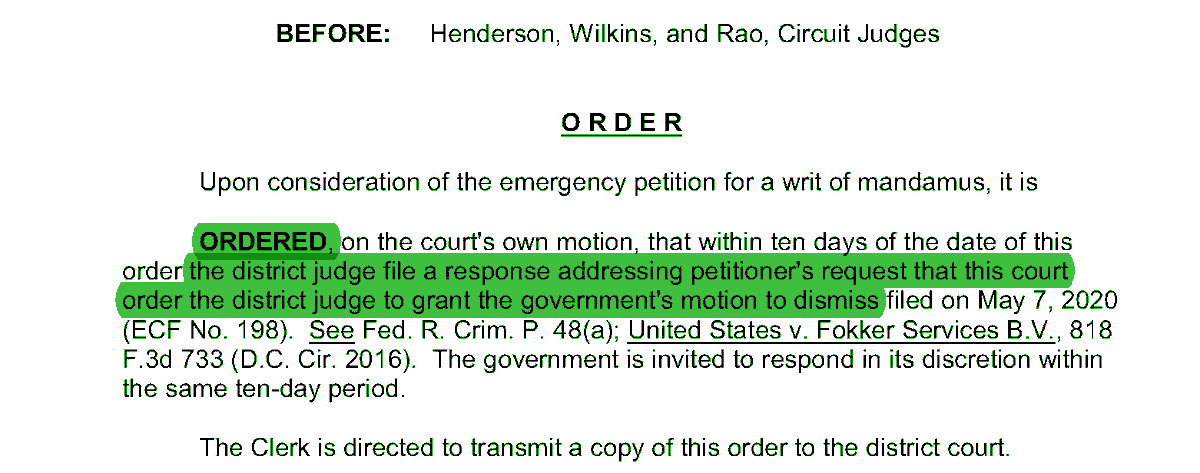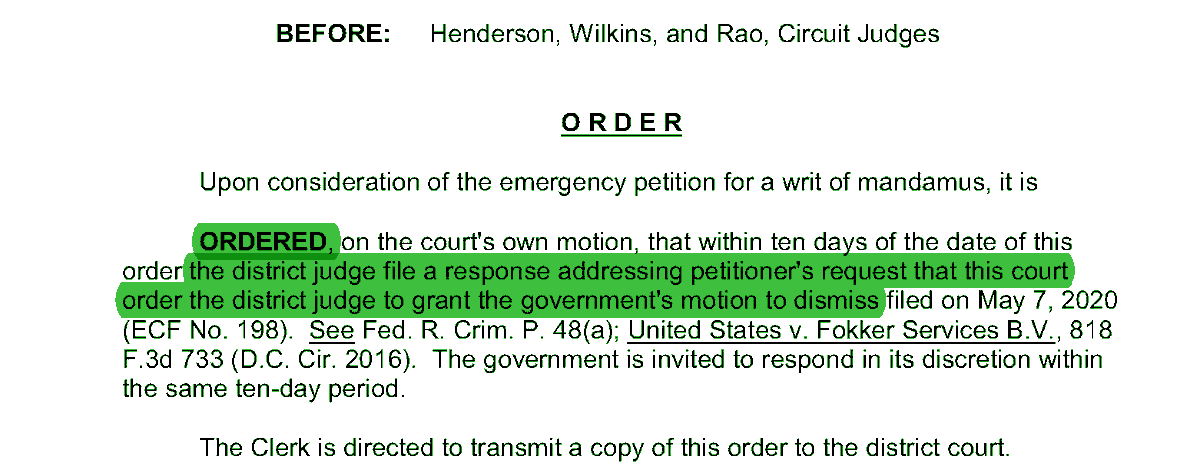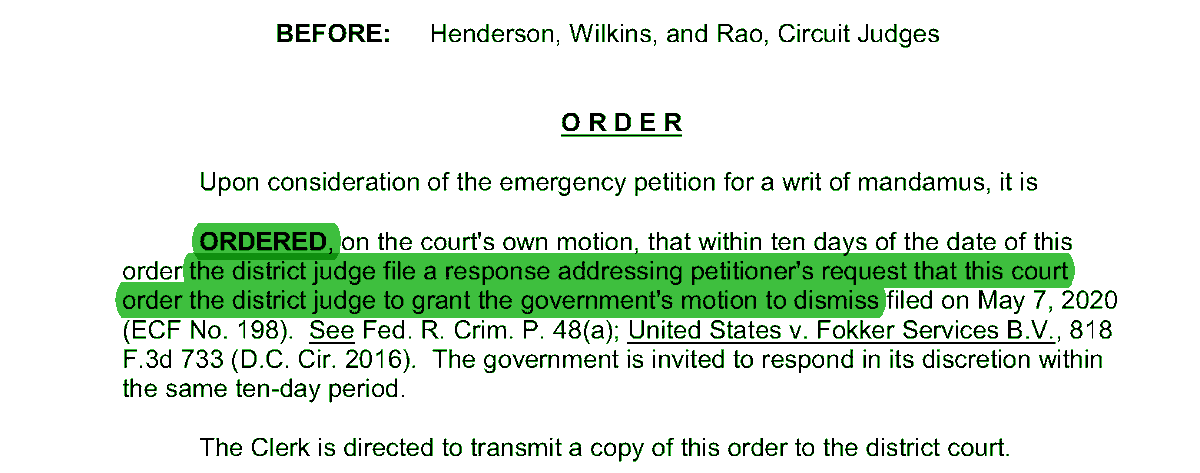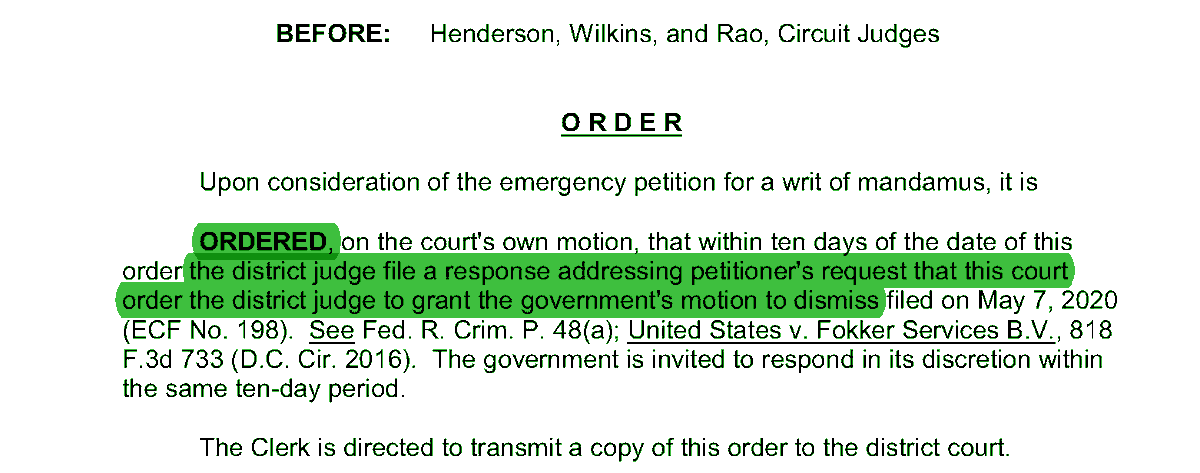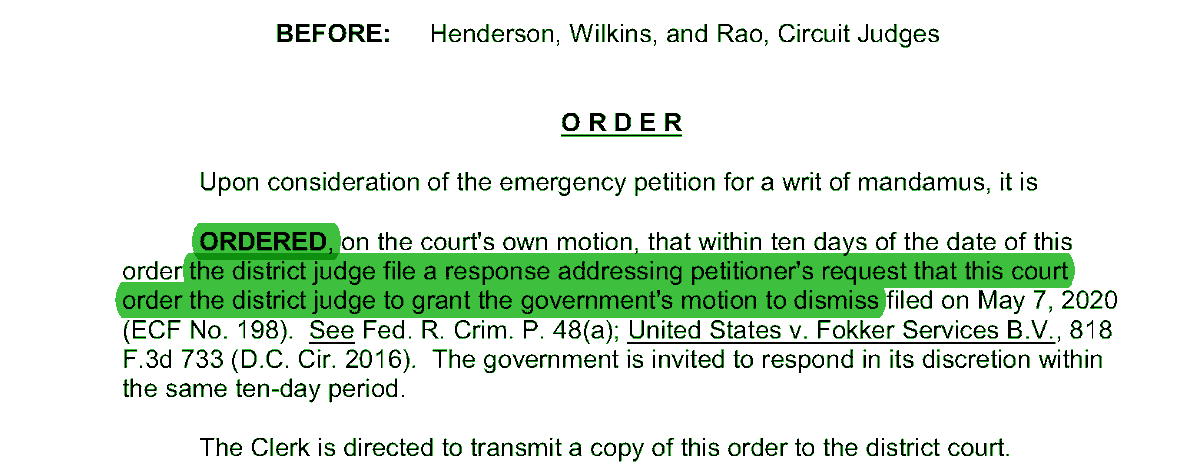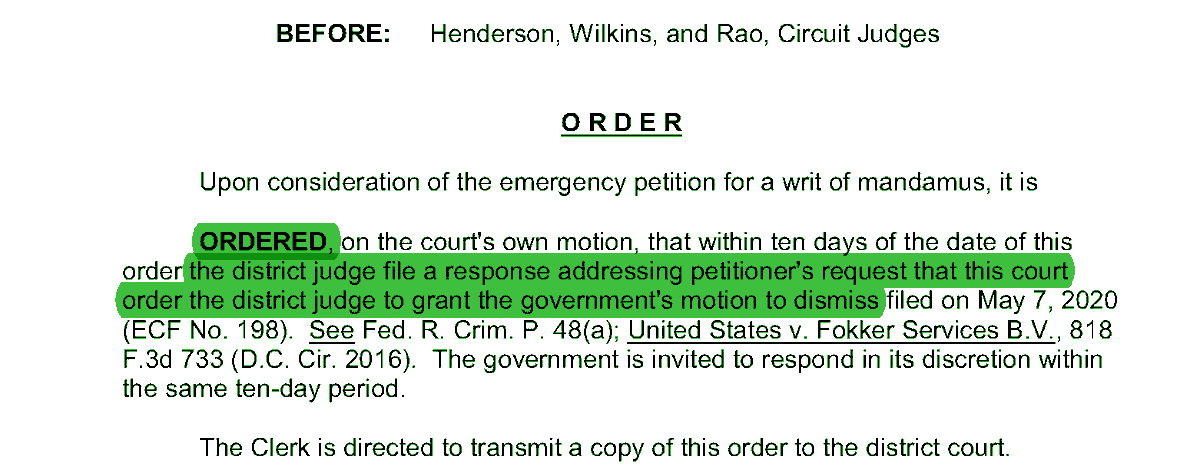1) The wording of the DC Circuit& #39;s order directing Judge Sullivan to personally respond to @SidneyPowell1& #39;s writ shows it is deeply troubled by Judge Sullivan& #39;s actions. #appellatetwitter
2) The Federal Rules of Appellate Procedure govern the filing and disposition of writs in the federal appellate courts. #appellatetwitter
3) These are DIFFERENT from the rules Judge Sullivan relied on to justify appointing amicus to oppose the DOJ& #39;s motion to dismiss. #appellatetwitter
4) Rule 21(b)(1) allows the DC Circuit to deny the writ petition outright, without asking for a response. This is what happens with the vast majority of writ petitions. #appellatetwitter
5) If the appellate court instead orders a response under Rule 21(b)(1), it shows it is concerned and wants to hear more about the matter. #appellatetwitter
6) By obtaining an order for a response, @SidneyPowell1 has already cleared a huge hurdle. #appellatetwitter
7) If the DC Circuit ordered a response and did nothing else, that alone would be a huge deal. But the DC Circuit didn& #39;t stop there. #appellatetwitter
8) Rule 21(b)(4) states that the appellate court "may invite or order the trial-court judge to address the petition or may invite an amicus curiae to do so." #appellatetwitter
9) The appellate court is not REQUIRED to order the trial-court judge to address the matter--it has the authority to do so, but doesn& #39;t need to exercise it. #appellatetwitter
10) Even if it wants to hear from the trial judge, the appellate court can simply "invite"--that is, request, or ask--the trial judge to respond. It does not have to ORDER the judge to respond. #appellatetwitter
11) And even if the appellate court orders the trial court judge to respond, it can avoid requiring the judge to personally defend the action under challenge by appointing a lawyer as amicus curiae to defend the judge& #39;s actions. #appellatetwitter
12) This is what the DC Circuit did in the Fokker case--the main case @SidneyPowell1 relies upon in her writ. See the highlighted portion of the fourth image below. #appellatetwitter
13) In Fokker, the DC Circuit said, "Because both parties seek to overturn the district court& #39;s denial of their joint motion to exclude time, we appointed amicus curiae to present arguments defending the district court& #39;s action." #appellatetwitter
14) The DC Circuit, in ordering Judge Sullivan to respond to @SidneyPowell1 & #39;s writ petition, could have easily appointed a lawyer as amicus to do so. #appellatetwitter
15) Note that an amicus appointed by the DC Circuit to defend Judge Sullivan would have had a job entirely different from John Gleeson& #39;s job as amicus appointed by Judge Sullivan to oppose the DOJ& #39;s motion to dismiss. #appellatetwitter
16) Had the DC Circuit appointed amicus, that lawyer& #39;s job would have been to present legal arguments defending Judge Sullivan& #39;s refusal to grant the DOJ& #39;s dismissal motion, NOT legal arguments purporting to show why the DOJ& #39;s motion should not be granted. #appelatetwitter
17) But the DC Circuit did not appoint a lawyer as amicus to defend Judge Sullivan& #39;s actions, unlike in Fokker.
18) Instead, the DC Circuit ordered Judge Sullivan to PERSONALLY respond and defend his actions, without an amicus attorney to do it for him. #appellatetwitter
19) This means that Judge Sullivan (and presumably his clerks) will have to PERSONALLY submit written briefing trying to legally justify his refusal to dismiss the Flynn case. #appellatetwitter
20) The DC Circuit is thus making Judge Sullivan--a lifetime federal judge--publicly and directly explain to them his actions. #appellatetwitter
21) In short, of all the options available to the DC Circuit for ruling on @SidneyPowell1 & #39;s writ, the DC Circuit, chose the most extreme, rare, and drastic of them. #appellatetwitter
22) It has ordered (not requested) Judge Sullivan to personally (and not through appointed amicus) respond and defend his actions to them. #appellatetwitter

 Read on Twitter
Read on Twitter